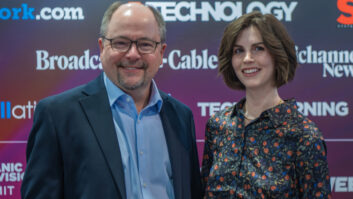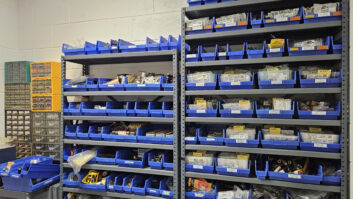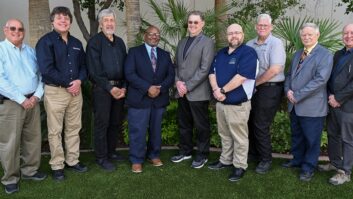The 2008 Broadcasters Clinic, presented by the Wisconsin Broadcasters Association and SBE Chapter 24, will take place Oct. 14–16 at the Marriott Madison West. The Society of Broadcast Engineers National Meeting will be held concurrently.
Here are selected clinic sessions of interest to radio. For the full program as well as information about SBE events during the conference, visit www.wi-broadcasters.org.
Tuesday Oct. 14
9:15 a.m., “HD and 10 dB Power Increase” — Richard Hinkle of Broadcast Electronics talks about the proposed 10 dB power increase in the HD signal and how it may affect implementation for the broadcaster, with an overview of benefits and issues, and the impact on manufacturers’ equipment and product offerings.
10 a.m., “HD on AM and Interference Issues” — Jeff Welton of Nautel says although complaints have not been widespread to date, the issues of antenna bandwidth and monitoring of “spectral regrowth” or digital intermodulation products are becoming more apparent as matters that need to be addressed in an AM facility.
11 a.m., “How to Make HD Radio Easy for Broadcasters” — Dave Hershberger, Continental Electronics Corp., says some of the approaches used in digital television can be adapted for use in digital radio. Technologies used to ease the broadcast engineer’s experience include embedded exporter, operating system, GUI and remote access, computer-independent hardware subsystems, adaptive equalization technology and performance monitoring.
1 p.m., “How Much Are We Really Saving? New Radio Station Construction Paradigms Examined” — Jim Armstrong, Axia. “Companies offering new technologies often claim increased efficiencies” through cost savings, installation labor savings and savings on maintenance. “But who has actually measured these claims? What data justifies the ad-pitch and anecdotal stories brought before us? And can we quantify how a new approach may be just ‘more fun’ than an old approach?”
1:45 p.m., “Nuts and Bolts of WebRadio” — Barry Hill, RCS NexGen, discusses how radio can keep step. “Use today’s latest technology to reach more listeners in more ways. Dazzle your audience with animated graphics and information from artist notes to RSS feeds. Add visuals synchronized to your audio stream. From CD covers and artist graphics to station photos and sponsor logos, the branding matches your station look.”
2:45 p.m., “Metadata Collection and Distribution for Radio” — Patrick Campion, ENCO Systems, reviews what types of data exist and what delivery methods are available. Includes scenarios of how properly gathered and formatted data can enhance broadcasts and lead to alternate means of revenue generation. Included will be details on locally generated data, rebroadcasted data streams from Internet and satellite sources and other scheduled data.
3:30 p.m., “HD Radio (the Next Generation)” — Bob Surette, Shively Labs. This session covers the effects of combining the digital and analog signals at the proposed higher HD power levels in respect to antenna operation, pattern, mask emissions, interference concerns and combiner designs. Time permitting, Surette will address NPR Labs’ interference measurements compared to Ibiquity experiments.
Wednesday Oct. 15
8 a.m., “TSI: Trouble-Shooting Investigation” — Gordon Carter addresses trouble-shooting and how to do it more efficiently, using a structured approach and disciplined techniques. “These techniques are applicable to trouble-shooting hardware, systems, software and even (to a limited extent) personal relationships.”
8:45 a.m., “Fundamentals of AM, FM and TV Coverage and Interference Considerations” — Jeremy Ruck, D.L. Markley & Associates. Fundamentals of AM, FM and TV coverage and interference considerations based on FCC rules. Ruck explore the topics of coverage and interference bases on the FCC rules and international agreements.
9:20 a.m., “TV White Space and How Spectrum Changes May Affect Wireless Microphones” — Chris Lyons, Shure. The FCC is reorganizing the UHF TV band, which has long been home to wireless microphones, in-ear monitors, production intercoms and other professional wireless gear. This session will examine the results of the recent spectrum auctions, the potential impact of new consumer devices operating in the “white spaces” and the interference protection approaches being considered.
1:30 p.m., “Bend Radius” — Steve Lampen, Belden. What actually happens when you bend a cable? Lampen, who is also an RW contributor, shows what changes inside a cable and, for specific coaxes and twisted pairs, what the effect is as you bend tighter.
2:15 p.m., “How Tower Design Relates to Antenna’s Performance” — David Davies, ERI, on causes of signal strength and antenna gain degradation, case studies and solutions to avoid both horizontal plane distortion and vertical plane attenuation scenarios.
3:15 p.m., “E-Scrap” — Jeff DeGarmo, CRT Processing Corp.; Sarah Murray, DNR; and Toral Jha, Cascade. Learn about the general issues regarding e-scrap, the implications of the 2009 digital switchover for television disposal options as well as how to find a vendor for equipment generated by television and radio stations.












